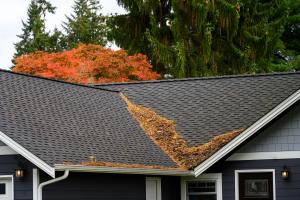Fall Roof Inspections: Protecting Homes Before Winter Arrives
The mild conditions of fall provide an optimal environment for both thorough inspections and the timely completion of follow-up work”
SLIDELL, LA, UNITED STATES, October 15, 2025 /EINPresswire.com/ -- As seasonal changes bring cooler temperatures and increased rainfall, the fall months present an ideal opportunity for property owners to schedule professional roof inspections. In the Gulf South, where summer heat and storms can cause significant wear, a thorough inspection before winter weather sets in can help identify issues early and prevent costly damage. Jules Albert III, owner of Jaymar Roofing in Slidell, Louisiana, emphasizes that the autumn season offers several practical advantages for assessing roof condition and planning any necessary maintenance.— Jules Albert III
Post-Summer Assessment
Throughout the summer, roofing systems in the region are exposed to intense sunlight, high heat, and the potential for tropical weather. These conditions can weaken materials, loosen flashing, and compromise seals. The end of summer marks a natural checkpoint for evaluating how the roof has held up against these stressors. Detecting small problems at this stage can help prevent them from escalating into larger issues during the wet and colder months ahead.
Optimal Weather Conditions
Fall weather tends to be more stable than summer or winter in the Gulf South. Moderate temperatures and reduced humidity create safer, more comfortable conditions for roofing professionals to conduct inspections and carry out any needed repairs. This climate also allows for better application of certain roofing materials and sealants, which can be temperature-sensitive.
According to Jules Albert III, "The mild conditions of fall provide an optimal environment for both thorough inspections and the timely completion of follow-up work."
Preparing for Winter Weather
Although winters in the Gulf South are generally milder than in northern regions, they can still bring cold fronts, heavy rain, and occasional ice or frost. A compromised roof can become more vulnerable under these conditions, increasing the risk of leaks, water damage, and structural concerns. A fall inspection ensures that drainage systems, flashing, and roof coverings are in good shape to handle whatever winter brings.
Identifying Storm-Related Damage
The peak of hurricane season occurs in late summer, and even areas that avoid direct landfall may experience strong winds and heavy rains. These forces can cause hidden damage that is not immediately obvious from the ground. Missing or lifted shingles, cracked tiles, and subtle structural shifts can all allow water intrusion over time. A professional inspection in the fall provides an opportunity to detect and address these problems before they worsen.
Gutter and Drainage Maintenance
Fall is also the time when leaves, twigs, and other debris begin to accumulate in gutters and downspouts. Clogged drainage systems can cause water to back up under the roof edge or overflow near the foundation. A roof inspection can include checking and clearing these systems to ensure proper water flow away from the building.
Safety and Insurance Considerations
Many property insurance policies require prompt reporting of roof damage to maintain coverage. A fall inspection can document the roof’s condition and provide a record of maintenance, which may be helpful if a claim is needed later. Addressing issues before they become emergencies can also reduce the risk of accidents or property loss.
Energy Efficiency Benefits
A roof that is in good repair contributes to overall energy efficiency. Gaps, leaks, or damaged insulation can allow heat to escape during cooler months, increasing energy costs. By identifying and fixing these issues in the fall, property owners can improve interior comfort and reduce unnecessary heating expenses in the winter.
Long-Term Maintenance Planning
Regular seasonal inspections—particularly in the fall—help create a long-term maintenance record for the roof. This record can be valuable for tracking the aging process of roofing materials, planning for eventual replacement, and ensuring compliance with warranty requirements. Fall inspections provide a clear starting point before winter stress and another comparison point in spring after seasonal weather shifts.
Professional Insight
Roofing professionals have the training and equipment to safely access and evaluate all parts of a roofing system. During a fall inspection, they can check for:
Missing, broken, or curling shingles or tiles
Signs of water intrusion or leaks inside the attic or ceiling
Damaged flashing around chimneys, vents, and skylights
Blocked or damaged gutters and downspouts
Moss, algae, or debris buildup that could retain moisture
Wear and tear on seals, joints, and fasteners
Identifying these issues early allows for corrective measures that protect both the roof and the structure beneath it.
Conclusion
Fall offers a strategic window to evaluate roof condition in the Gulf South. The combination of post-summer wear, pre-winter preparation, and favorable weather makes it the season when inspections can be most effective. With professional evaluation, property owners can address small issues before they become larger problems, maintain energy efficiency, and ensure that the roofing system is ready for the months ahead.
By making roof inspections a routine part of fall maintenance, the lifespan of the roof can be extended, the risk of costly repairs reduced, and peace of mind maintained through seasonal changes.
Morgan Thomas
Rhino Digital, LLC
+1 504-875-5036
email us here
Visit us on social media:
Facebook
Legal Disclaimer:
EIN Presswire provides this news content "as is" without warranty of any kind. We do not accept any responsibility or liability for the accuracy, content, images, videos, licenses, completeness, legality, or reliability of the information contained in this article. If you have any complaints or copyright issues related to this article, kindly contact the author above.


